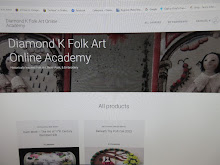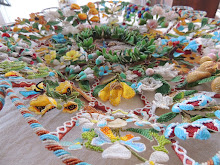Hunting & Ploughing Side Friezes Complete!
I guess its been a while since I made a blog post, I apologize! It is so easy for me just to stick a picture on the Instagram, I forget I have not blogged in a while. I have been baby stepping along on my Scenes of Country Life, or Rural Pursuits casket, and just completed both side friezes today.
These first few pictures are close views of the plough side. Love my rooster! This casket has been a challenge in so many ways. I have said a million times I hate satin stitch, loathe even more Soie Ovale or flat filament silk....but blast it I really love how they look and wanted to make a flat work casket. I picked the smallest I had thinking it would be a good thing...less area to stitch on. WRONG. Oh my golly was I so wrong.
I want to stay true to 17th c design and colour, but also the actual stitching techniques used then. I cannot even guestimate the amount of hours I have spent studying period stitching and caskets. I have literally traveled the globe to lay my own retinas on microscopic stitches from so long ago. And they really are microscopic. If you have only ever seen 17th c period stitching from books or a computer screen, you will be amazed at how tiny the motifs and figures are in person. For example, the photo above. Ok you know its for a frieze...but how tall do you think the hillock under the thistle is?
Less than 1/16 of an inch!
Stitching on this scale one must think outside the box and scale down ready available materials, as everything other than tram weight silk is just too huge to use. If there is interest I will make a blog post on the different gimps available and how they compare to each other. For every period embroidery that uses gimp to outline satin stitched motifs, there is equally one that does not. Outlining with gimp can hide a ragged or unsightly edge, and it does look very nice, but I want to highlight another 17th c stitching practice that I have labored very hard over to achieve
Not outlining or split stitching the pattern line before satin stitching over it. Today, stitchers will usually do so in a matching/ coordinating thread to help hide gaps between each stitch, giving a nice solid edge to the motif. I actually prefer to not stitch any kind of outlining under my satin stitch. Not only does it add greatly to overall stitching time, if you are a sloppy stitcher, you can also distort the motif. You become a slave to the underlying stitching. One does have to be very careful and place each and every stitch right along side each other, but after a few hundred stitches, one doesn't even think about it. I stitched the iris above with a single ply of Soie Ovale ( there are 6 plies to a strand)...Id say there are well over 50 stitches width wise to the inch. Basically, I would move over a single thread on my satin ground with each stitch.
I had to include strawberries on my hunting side because we always find wild strawberries when we are out hunting. I think I have actually picked some wild strawberries that are larger than the ones on my frieze...
For scale, they are smaller than my pinky fingernail! Like I said, this casket is a challenge, but that's what makes it so much fun to stitch. I literally go to bed thinking about what stitching I will be trying out the next day....what colours, what techniques. If I don't get time to work on it, I actually get a bit cranky(or worse). I really do love stitching & hope you are having fun with your stitching too, whatever it may be!
































2 comments:
Wow!
Absolutely sublime stitching. This casket is going to be stunning!
Post a Comment